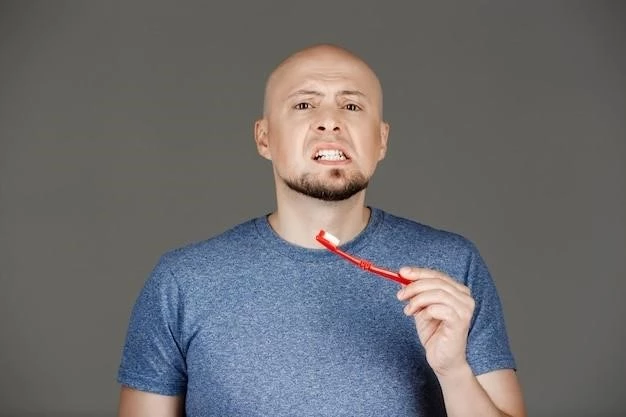Disease Overview
Taurodontia, Absent Teeth, Sparse Hair Syndrome is a rare genetic condition characterized by malformations of molars (taurodontia), missing teeth, and sparse, slow-growing hair. The cause is unknown, but it follows an autosomal recessive pattern.
Characteristics of Taurodontia, Absent Teeth, Sparse Hair Syndrome
Taurodontia, Absent Teeth, Sparse Hair Syndrome is a rare genetic condition characterized by missing teeth, malformations of molars (taurodontia), and sparse, slow-growing hair. Affected individuals may have small, pointed teeth and delicate, light-colored, brittle hair. This syndrome often presents with congenital absence of teeth and sparse or absent hair, with taurodontia commonly observed. The condition affects less than 15 patients from various families٫ showing the rarity of the syndrome. Additionally٫ individuals with this syndrome may have an oligodontia٫ and the majority present with ectodermal dysplasia features such as abnormal nail patterns. The disease follows an autosomal recessive inheritance pattern٫ highlighting its genetic nature.
Cause and Inheritance Pattern
The cause of Taurodontia, Absent Teeth, Sparse Hair Syndrome is unknown. However, it follows an autosomal recessive pattern of inheritance, meaning that an individual must inherit two copies of the defective gene, one from each parent, to develop the syndrome. This genetic condition results in malformations of molars (taurodontia), missing teeth, and sparse, slow-growing hair in affected individuals. Research has focused on understanding the specific genetic mutations responsible for the syndrome.

Clinical Presentation
Individuals with Taurodontia, Absent Teeth, Sparse Hair Syndrome often present with congenital absence of teeth, particularly molars, and sparse, slow-growing hair. The teeth may be small, pointed, or malformed. Light-colored, fragile hair and abnormalities in nail patterns are typical. This syndrome exhibits an autosomal recessive inheritance pattern and is rarely reported in medical literature.
Symptoms in Affected Individuals
Individuals with Taurodontia, Absent Teeth, Sparse Hair Syndrome commonly display symptoms such as congenital absence of multiple teeth, including molars, malformed or pointed teeth, and delicate, brittle hair that grows slowly and is often sparse. Moreover, specific nail abnormalities may be observed in affected individuals. The presence of taurodontia, a condition where the tooth pulp chamber is enlarged, is a frequent characteristic of this syndrome. Affected individuals may also experience ectodermal dysplasia features. This rare genetic condition affects less than 15 patients from various families, highlighting its rarity in the medical field.
Findings in Reported Cases
Studies have reported cases of Taurodontia, Absent Teeth, Sparse Hair Syndrome where affected individuals present with congenital absence of teeth, including molars, along with sparse, slow-growing hair. The unique morphology of primary and/or secondary molars, often with taurodontia, is a common characteristic observed in individuals with this syndrome. Nail and perspiration abnormalities may also accompany the clinical presentation of affected individuals. This rare genetic condition has been described in less than 15 patients from various families, underscoring its rarity in medical literature.
Diagnosis and Research
Experts diagnose Taurodontia, Absent Teeth, Sparse Hair Syndrome through physical examination, genetic testing, and dental imaging; Research on this rare genetic condition focuses on identifying causative mutations. Specialists continually investigate this syndrome to enhance diagnostics and develop potential treatments.
Diagnostic Methods
The diagnosis of Taurodontia, Absent Teeth, Sparse Hair Syndrome typically involves a combination of physical examination, genetic testing to identify causative mutations, and dental imaging to evaluate the presence of taurodontia and missing teeth. Research is ongoing to refine diagnostic methods for this rare genetic condition, aiming to enhance early detection and management strategies.
Specialists and Research on the Syndrome
Experts specializing in Taurodontia, Absent Teeth, Sparse Hair Syndrome have conducted research, received grants, and contributed to clinical trials and relevant organizations. These specialists possess in-depth knowledge of the syndrome and are dedicated to advancing understanding, diagnosis, and potential treatments for this rare genetic condition.

Support and Advocacy
Community groups for Taurodontia, Absent Teeth, Sparse Hair Syndrome offer support and information to patients and families. Healthcare providers specializing in this rare genetic condition provide tailored care. Ongoing research and involvement in advocacy organizations aim to enhance understanding and support for individuals affected by the syndrome.
Community Groups and Support Organizations
Community groups and support organizations focusing on Taurodontia, Absent Teeth, Sparse Hair Syndrome offer valuable resources and guidance to individuals and families affected by the condition. By providing support, information, and a platform for connecting with others facing similar challenges, these groups play a crucial role in enhancing the overall well-being and understanding of the syndrome. Healthcare providers with expertise in this rare genetic condition often collaborate with these organizations to ensure comprehensive support for patients.
Healthcare Providers and Clinical Interest
Clinical healthcare providers specializing in Taurodontia, Absent Teeth, Sparse Hair Syndrome exhibit a keen interest in this rare genetic condition. These healthcare professionals may offer specific expertise, diagnostic services, and tailored care plans for individuals affected by the syndrome. Their clinical interest contributes to advancing knowledge, research, and treatments related to this unique genetic disorder.
Prognosis and Treatment
Living with Taurodontia, Absent Teeth, Sparse Hair Syndrome can involve managing missing teeth, dental abnormalities, and hair characteristics. Available resources offer support and guidance to caregivers. Understanding the condition and accessing appropriate medical care are crucial for individuals affected by this rare genetic syndrome.
Living with the Disease
Living with Taurodontia, Absent Teeth, Sparse Hair Syndrome involves managing missing teeth, dental malformations, and sparse hair. Patients may require dental interventions to address missing teeth, while hair care routines may focus on maintaining the quality of existing hair. Understanding the genetic nature of the syndrome and accessing regular medical care are crucial for individuals living with this rare condition.
Available Resources and Caregiver Support
Patients with Taurodontia, Absent Teeth, Sparse Hair Syndrome can benefit from available resources provided by community groups and support organizations. These resources offer valuable information, emotional support, and guidance to caregivers facing the challenges of caring for individuals with this rare genetic condition. Caregivers play a crucial role in the management and well-being of affected individuals, and accessing caregiver support is essential for holistic care.
Prevalence and Related Conditions
Taurodontia, Absent Teeth, Sparse Hair Syndrome is a rare genetic condition characterized by missing teeth, malformations of molars (taurodontia), and sparse, slow-growing hair. The syndrome is estimated to affect less than 15 patients from various families٫ highlighting its rarity in medical cases. Comparison with Hypohidrotic Ectodermal Dysplasia reveals distinct features and incidence rates among affected individuals.
Comparison with Hypohidrotic Ectodermal Dysplasia
Taurodontia, Absent Teeth, Sparse Hair Syndrome and Hypohidrotic Ectodermal Dysplasia are distinct conditions with varying features. While both involve dental abnormalities and hair issues, Hypohidrotic Ectodermal Dysplasia is more prevalent, affecting approximately 1 case per 100,000 births. In contrast, Taurodontia, Absent Teeth, Sparse Hair Syndrome is extremely rare, with less than 15 reported cases from various families. Understanding these differences is crucial for accurate diagnosis and management.
Incidence Rates and Population Affected
Taurodontia, Absent Teeth, Sparse Hair Syndrome is an extremely rare genetic condition that affects less than 15 patients from various families, indicating its low prevalence. In contrast, the prevalence of Hypohidrotic Ectodermal Dysplasia, a related condition, is estimated to be around 1 case per 100,000 births, highlighting its higher incidence compared to Taurodontia Syndrome.
